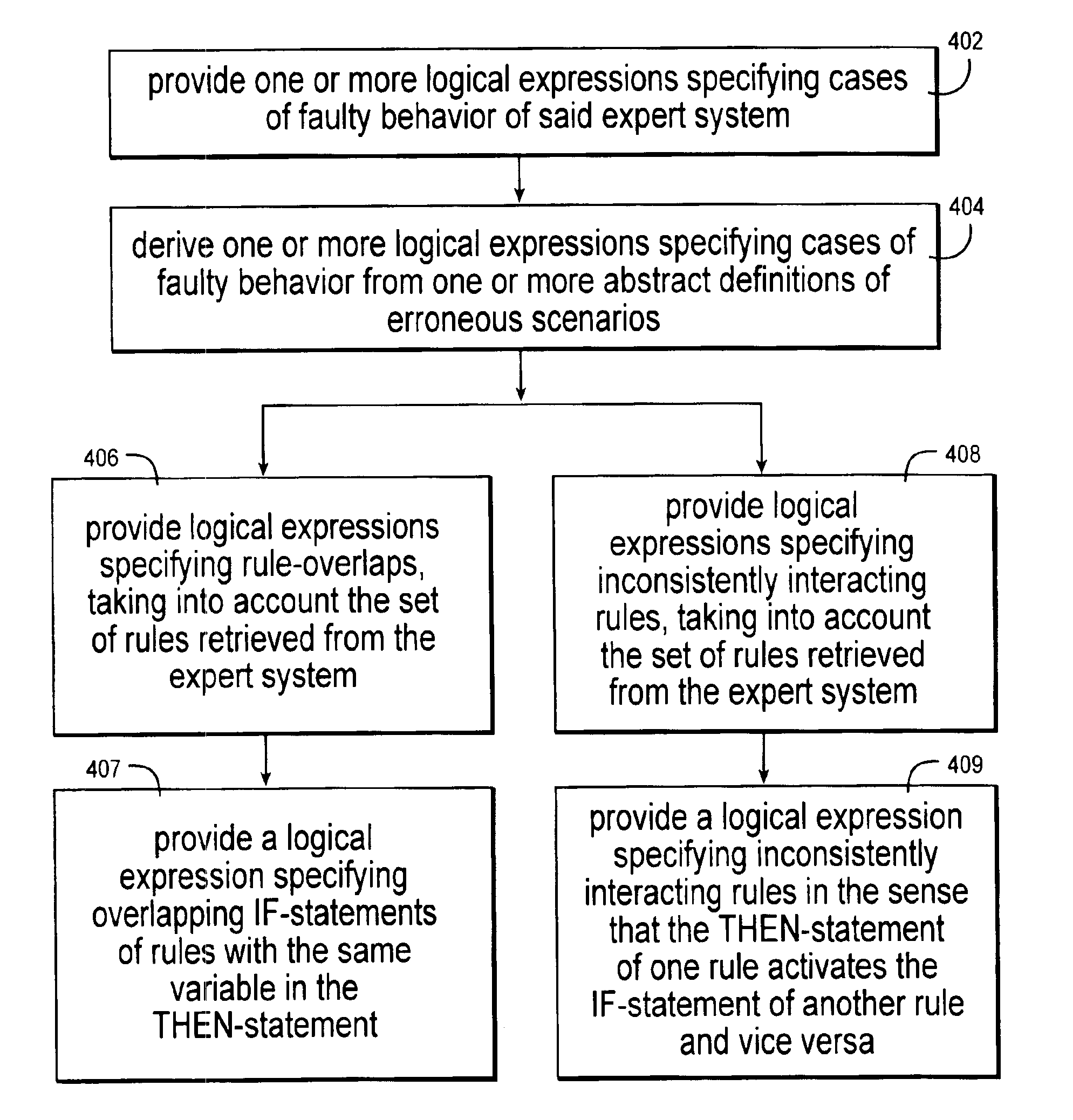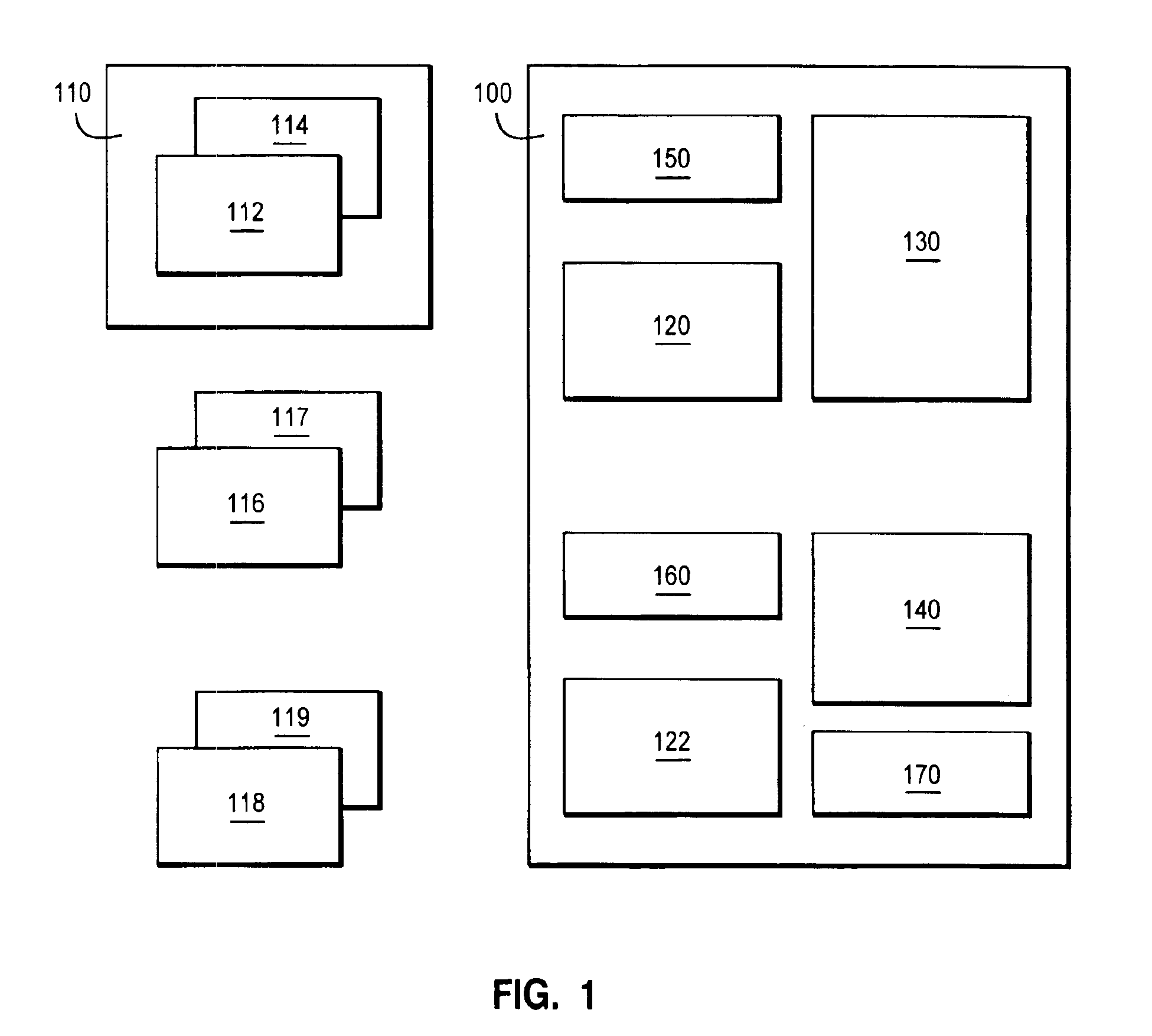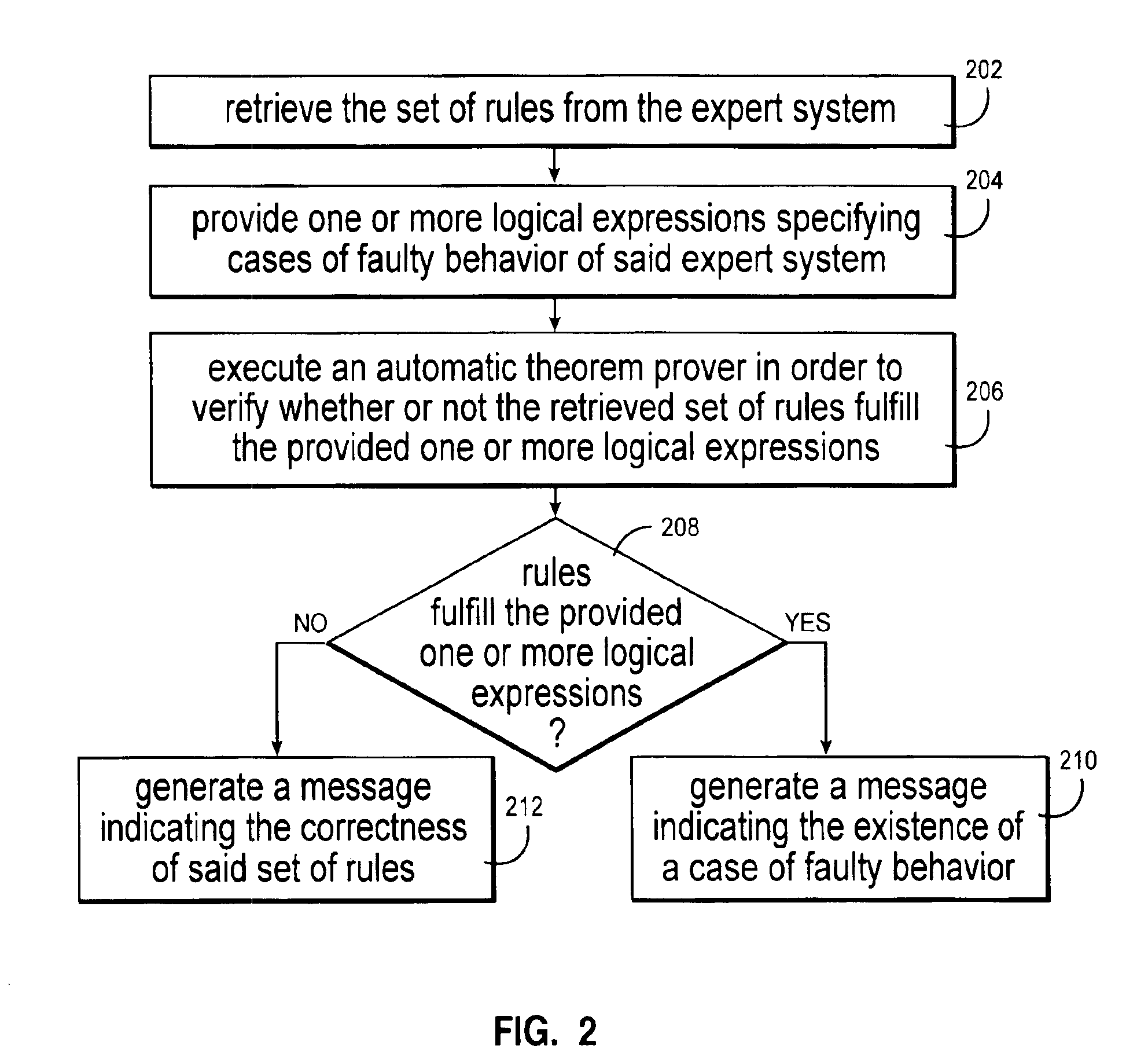Loop detection in rule-based expert systems
a rule-based expert system and loop detection technology, applied in adaptive control, process and machine control, instruments, etc., can solve problems such as unintended behavior, increased complexity of the whole system, and even more weight, so as to achieve the effect of easy understanding
- Summary
- Abstract
- Description
- Claims
- Application Information
AI Technical Summary
Benefits of technology
Problems solved by technology
Method used
Image
Examples
Embodiment Construction
[0074]With reference now to FIG. 1, there is depicted a a high level block diagram illustrating a device 100 in accordance with the present invention together with an external expert system 110 and data input.
[0075]The expert system 110 based on one or more set of rules 112, 114, whereby one set of rule may also consist of all rules provided by the expert system 110. It may be implemented as a computer program or as part of an apparatus for controlling electrical devices such as a climate control system or a complex computer system comprising database, storage, execution units and networks. One or more logical expressions 116, 117 and one or more descriptions of erroneous scenarios 118, 119 are provided. The logical expressions 116, 117 and the erroneous scenarios 118, 119 may be formed by a text file that may follow a predetermined standard, such as an XML (Extensible Markup Language) based format.
[0076]The device 100 may also be implemented in hardware or software and is configure...
PUM
 Login to View More
Login to View More Abstract
Description
Claims
Application Information
 Login to View More
Login to View More - R&D
- Intellectual Property
- Life Sciences
- Materials
- Tech Scout
- Unparalleled Data Quality
- Higher Quality Content
- 60% Fewer Hallucinations
Browse by: Latest US Patents, China's latest patents, Technical Efficacy Thesaurus, Application Domain, Technology Topic, Popular Technical Reports.
© 2025 PatSnap. All rights reserved.Legal|Privacy policy|Modern Slavery Act Transparency Statement|Sitemap|About US| Contact US: help@patsnap.com



